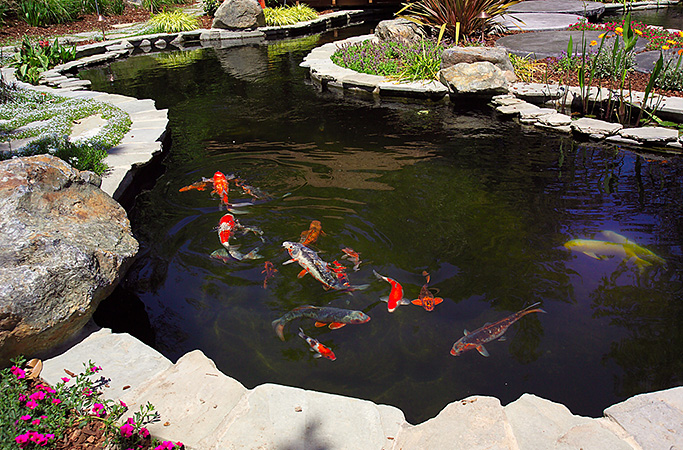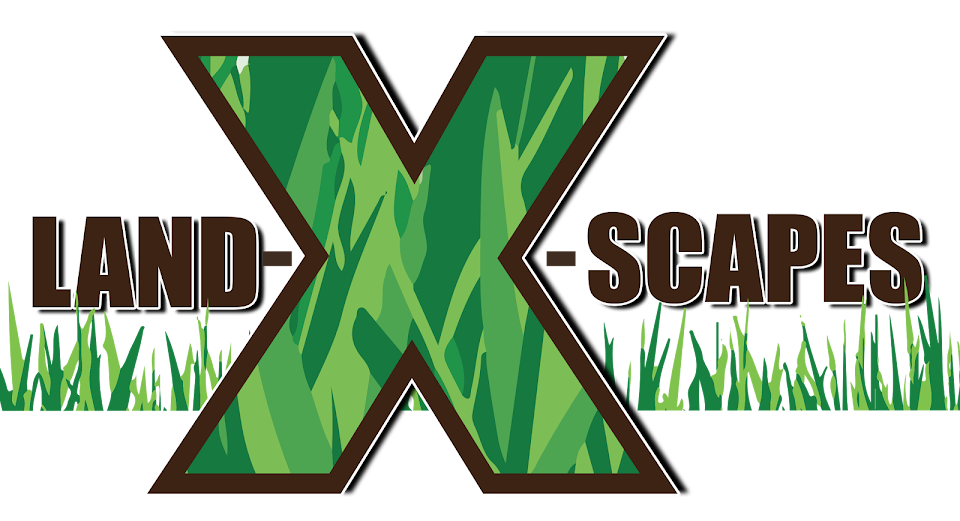
Koi Pond Design TipsA koi pond must be properly designed in order for the fish to thrive. Most professionals recommend that a pond intended for koi meet a certain set of requirements in order to provide the best habitat for the fish. Generally, koi ponds are larger than fishless ponds.
Koi pond size requirements:
- 3+ feet deep
- 25 sq. ft. of pond per koi
- No less than 1,000 gallons of water
It's important to realize that fish need shade. If your pond location is in direct sunlight consider growing floating plants like water lilies. Half of the ponds surface should be shaded to provide koi with a comfortable place where they can escape the sunlight. Another benefit of floating plants is that they provide a place for the fish to hide from predators.
Water plants are an essential element of a koi pond. Aquatic plants help balance the ecosystem, creating a more natural home for the fish. Some plants are oxygenators, meaning they will release oxygen into the water, which the fish can then breathe. Additionally, koi eat many types of water plants. Fish do not have to be fed provided you do not overstock your pond. They will live off of algae, insects and other miscellaneous food that the environment provides. Certain water plants can be included in this source of food.

FiltrationA good pond filter will help keep your pond clear and clean. Koi produce a significant amount of waste, making a filter a necessity. There are two types of filtration: mechanical and biological.
Mechanical filtration traps debris and fish waste. Pump baskets, bottom drains and skimmers are all good for mechanical filtration. Biological filtration utilizes beneficial bacteria to convert toxins into harmless substances.
AerationFish need oxygen to survive. Depending on the size of your pond, the amount of plants growing and the number of fish you may need to consider aeration. Aeration is a process in which oxygen is circulated through pond water.
Waterfalls and fountains are two pleasing ways to aerate a pond. The motion of the water will allow oxygen to circulate naturally. However, you may also want to consider installing equipment that will help aerate your pond. Aeration pumps or jets are especially beneficial if you live in a hot climate or have large fish.

Water QualityThe quality of your pond water will have an impact on the health of your fish. You'll want to keep a close eye on water temperatures and pH levels. Ideal water temperature for koi is 39° to 68° F. The deeper your pond is the easier it will be to regulate the temperature. The best pH level for a koi pond is between 7.0 and 7.8.
Be aware that chlorine is harmful to koi, it will burn your fishes gills and possibly lead to death. For this reason you must wait at least a week after filling your pond for the chlorine to dissipate before stocking it with fish. If you don't want to wait you may purchase a dechlorinator from a local pet store.
Great thing about ponds are, as time goes by they just get more beautiful as foliage grows in and even seeing your fish grow and become pets of the family!
LandXscapes offers Koi Pond build & weekly Pond service in the Dallas area!

Nice
ReplyDeleteplants for koi pond he Best Plants for Koi Ponds (Plants for Shelter, Oxygen & Filtration) ; 1) Water Hyacinth (Eichhornia crassipes) ; 5) Scouring Rush (Equisetum).
ReplyDelete